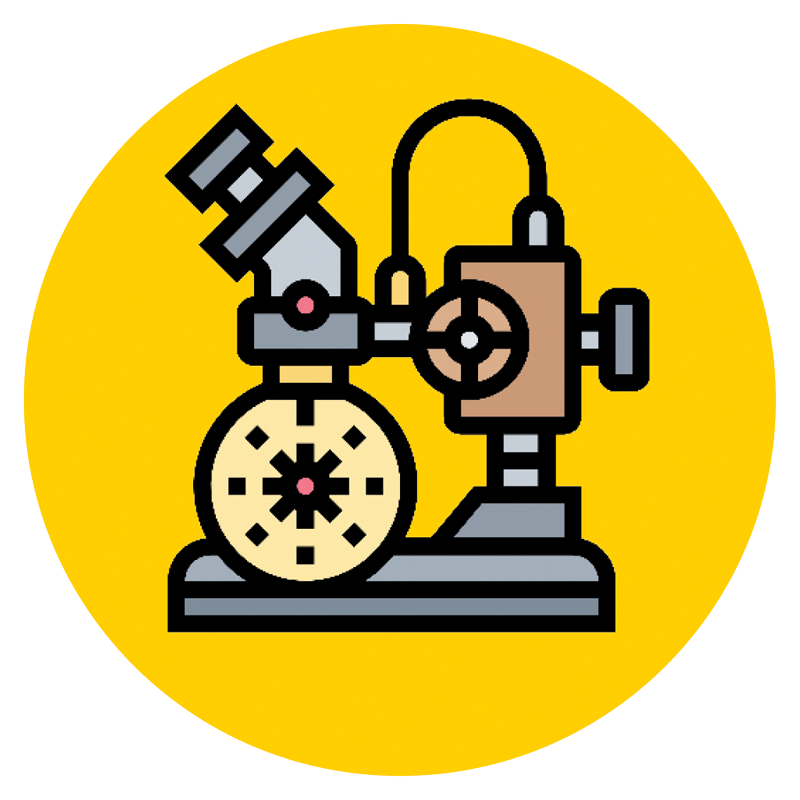 Optical tweezers. A deep silicon etch tool. A small angle X-ray diffractometer.
Optical tweezers. A deep silicon etch tool. A small angle X-ray diffractometer.
It’s a wish list of sorts. But not the type you can fulfill on Amazon.
“To pursue groundbreaking science and engineering research requires sophisticated instrumentation,” says John P. Coulter, a professor of mechanical engineering and mechanics (MEM) and the Rossin College’s senior associate dean for research. “The NSF’s Major Research Instrumentation program provides critical support for universities to invest in these tools and facilities that will shape research and help train up-and-coming researchers.”
To date, Lehigh has received more than 20 MRI grants (which can range from $100,000 to $4 million). The two most recent are led by Rossin College faculty and bring in a total of nearly $2.3 million for equipment to be housed in the Health, Science and Technology (HST) Building.
“Overall, receiving these grants signifies there’s a compelling need for the instrumentation, and that the university has the related expertise and human capital to use it to tackle grand challenges and gain new knowledge that can make an impact on society in the long run,” says Coulter. “This latest investment continues to strengthen Lehigh’s internationally recognized capabilities in materials research and microscopy.”
Uncovering ‘weak links’ in microstructures
Thanks to a nearly $1.3 million MRI grant awarded in 2022, researchers across Lehigh will soon be able to conduct experiments using a state-of-the-art plasma focused ion beam system, or FIB, together with the capability for in situ mechanical testing at various temperatures between minus 130 and 1000 degrees Celsius.
“We had 25 faculty members involved in this proposal, all of whom submitted projects requiring the FIB system, and many of them are associated with Lehigh’s Interdisciplinary Research Institutes,” says Masashi Watanabe, a professor of materials science and engineering and a major contributor on the proposal. “And they represent a range of disciplines. There’s just such a high demand for a machine like this.”
“The FIB system is a micro-/nano-fabrication tool that is able to precision-machine samples in a rapid, efficient way, similar to woodworking, but at the micrometer or even nanometer level,” says lead researcher Helen Chan, New Jersey Zinc Professor of Materials Science and Engineering. “The fixture that allows for mechanical testing in real time enables us to indent or pull or push on a material so we can simultaneously watch how it fractures and deforms. Even more exciting, we can study the effect of temperature on the deformation process.”
Chan says the EBSD (electron backscattered diffraction) capability is exciting because when certain materials are subjected to a stress, a phase or orientation change can take place, and this is detectable by EBSD. “These changes are often highly localized, and hence difficult to observe in bulk samples,” she says. “With in situ mechanical testing with EBSD analysis, we can observe these changes as a function of the stress and correlate with changes in the properties.”
 The new instrumentation also includes an ultra-high-speed electron camera for acquisition of EBSD patterns.
The new instrumentation also includes an ultra-high-speed electron camera for acquisition of EBSD patterns.
“This capability will allow us to see the orientation, meaning the crystal structure of a particular sample,” says Watanabe. “We’ll be targeting 2000 to 3000 patterns per second, which is incredibly fast. So during deformation, we’ll be able to see these crystal structures change as the change is taking place.”
“This is very new,” he continues. “No research team on Earth has yet been able to achieve this.”
Such information will inform researchers on how cracks in structures initiate, says Chan. There may be “weak links” in the microstructure that could be alleviated by improved processing. “We would like to build ‘crack stoppers’ that make it more difficult for cracks to propagate throughout a structure,” she says. “The net result would be structures that exhibit higher toughness and longer lifetimes.”
The Lehigh team behind the effort also includes Coulter and fellow MEM faculty member Natasha Vermaak, as well as Wojciech Z. Misiolek, the Loewy Professor of Materials Science and Engineering.
Getting technology closer to the action
Lehigh’s second MRI grant funded in 2022 received nearly $1 million, and it will also allow researchers to try something completely new.
“No one else, to our knowledge, has tried to put such a high-speed computing cluster so close to the equipment in their labs,” says Yaling Liu, a professor of bioengineering and mechanical engineering and mechanics. “We believe the facility we’re proposing will have a huge impact on our campus by enabling big-data analysis and new science.”
Liu leads the Lehigh team that was awarded the MRI grant to fund the development of a “heterogeneous edge computing platform” for real-time scientific machine learning. The team includes Lifang He, an assistant professor of computer science and engineering; Wujie Wen, an assistant professor of electrical and computer engineering; Yue Yu, an associate professor of applied mathematics in Lehigh’s College of Arts and Sciences; and Joshua Agar, an assistant professor of mechanical engineering and mechanics at Drexel University.
Heterogeneous computing is a technique in which different processors are applied toward the execution of specific tasks, resulting in gains in performance or efficiency or both. Edge computing refers to the ability to process data as close to the data source as possible. Combining the two will the address several critical computing needs.
 “Computer clusters are typically located far from the equipment that generates the data,” says Liu. “And that distance affects the speed by which data can be analyzed. So what ends up happening is that you collect all this data, and then you spend days or weeks analyzing it after the fact. And if something went wrong with the experiment, you have to go back and repeat it. This can take hours or days—and it can be unnecessarily expensive.”
“Computer clusters are typically located far from the equipment that generates the data,” says Liu. “And that distance affects the speed by which data can be analyzed. So what ends up happening is that you collect all this data, and then you spend days or weeks analyzing it after the fact. And if something went wrong with the experiment, you have to go back and repeat it. This can take hours or days—and it can be unnecessarily expensive.”
Data storage poses another problem. Equipment like high-speed microscopes generate huge amounts of information, which means researchers like Liu are forced to keep their experiments short. And because of the lag between collection and analysis, the current system doesn’t allow researchers to purge redundant or wasteful data. So valuable storage space is sometimes taken up by useless information.
The facility will help circumvent latency and bandwidth challenges, and its proximity to the data sources will allow for real-time analysis and control of optical, scanning probe, and transmission electron microscopy. Liu says the server will be installed in Lehigh’s state-of-the-art HST Building, with high-speed fiber connecting it to various labs.
The platform will allow researchers across the university to make advances in fields like wireless communication, healthcare monitoring, bioinformatics, advanced manufacturing, and multiagent autonomous systems, and it will facilitate interdisciplinary teams pursuing novel research directions.
Liu leads Lehigh’s Bio-Nano Interface Lab and is interested in the biomedical applications of the new platform. He and his team currently use the high-speed camera of an optical microscope to sort tumor cells from normal cells. But with each blood sample containing hundreds of millions of cells, the researchers are limited by how fast they can sort the cells and how long their experiments can last. And they’re unable to make decisions in the moment about what they’re seeing.
“We’ll be able to do continuous, real-time analysis that will enable us to finish our tasks in one day, rather than over several months,” he says. “That will allow us to advance our research, which is incredibly exciting.”
Icons, from top: iStock/DenkCreative; © Eucalyp via Canva.com; Adobe Stock/BestVectorStock
